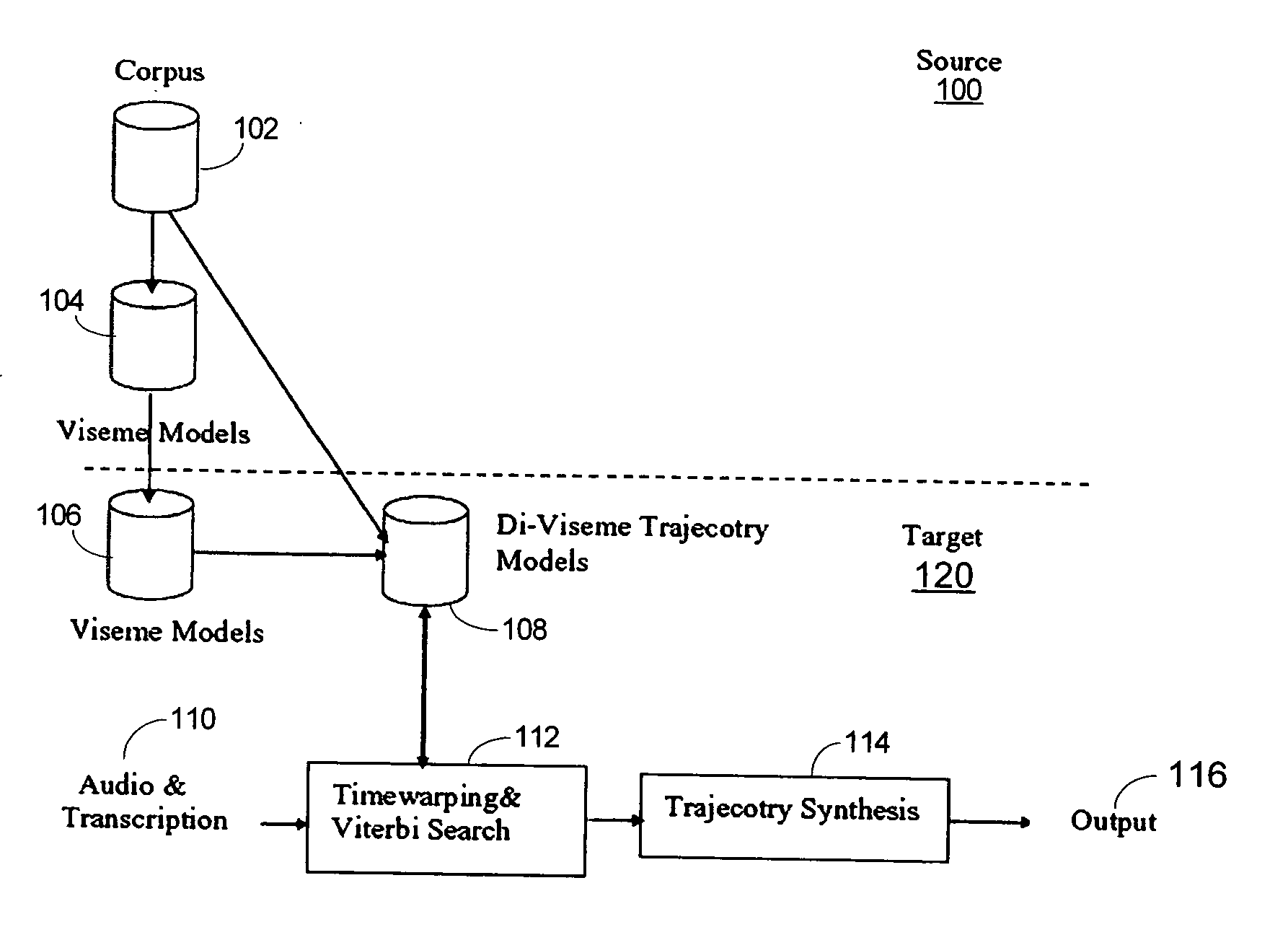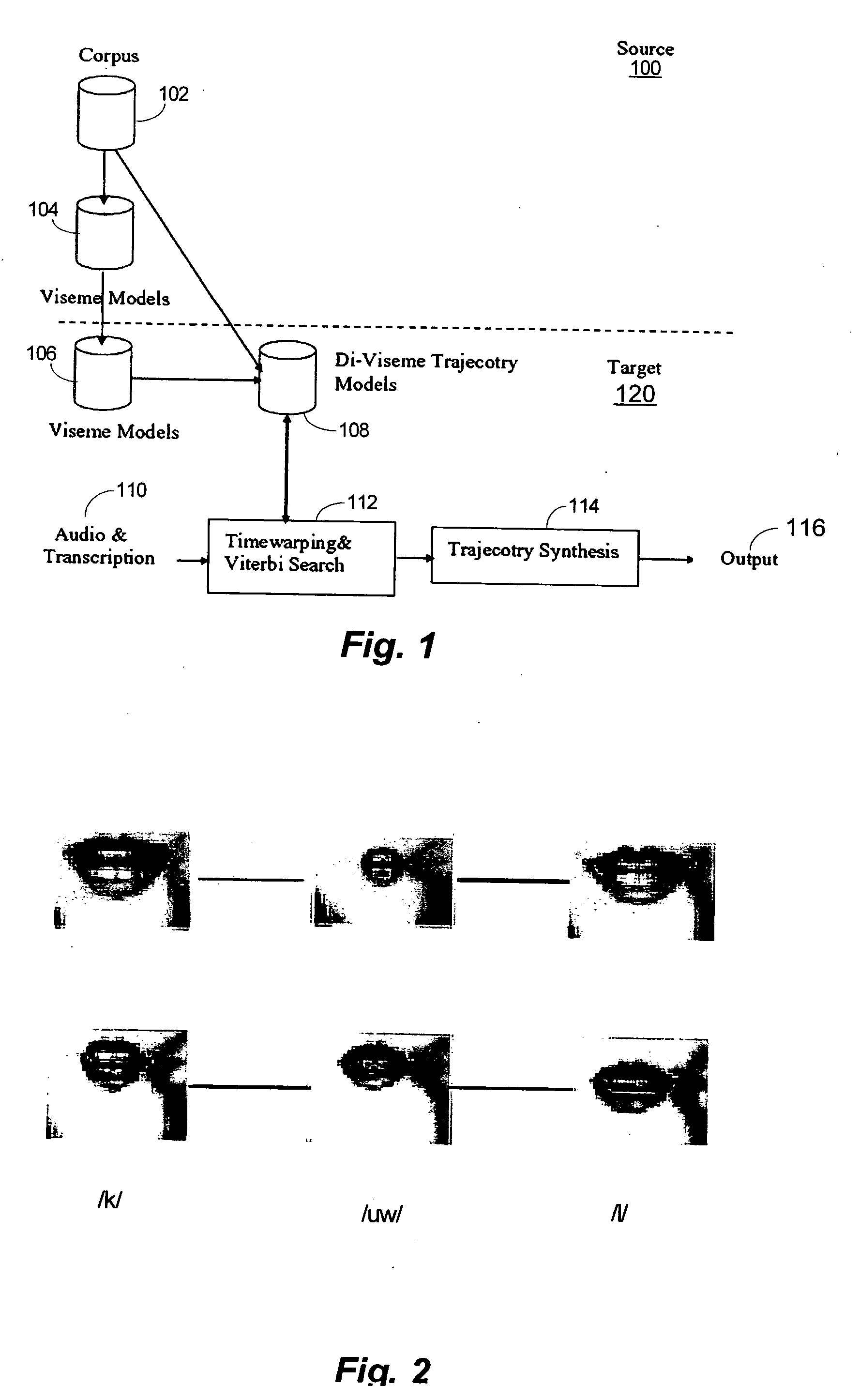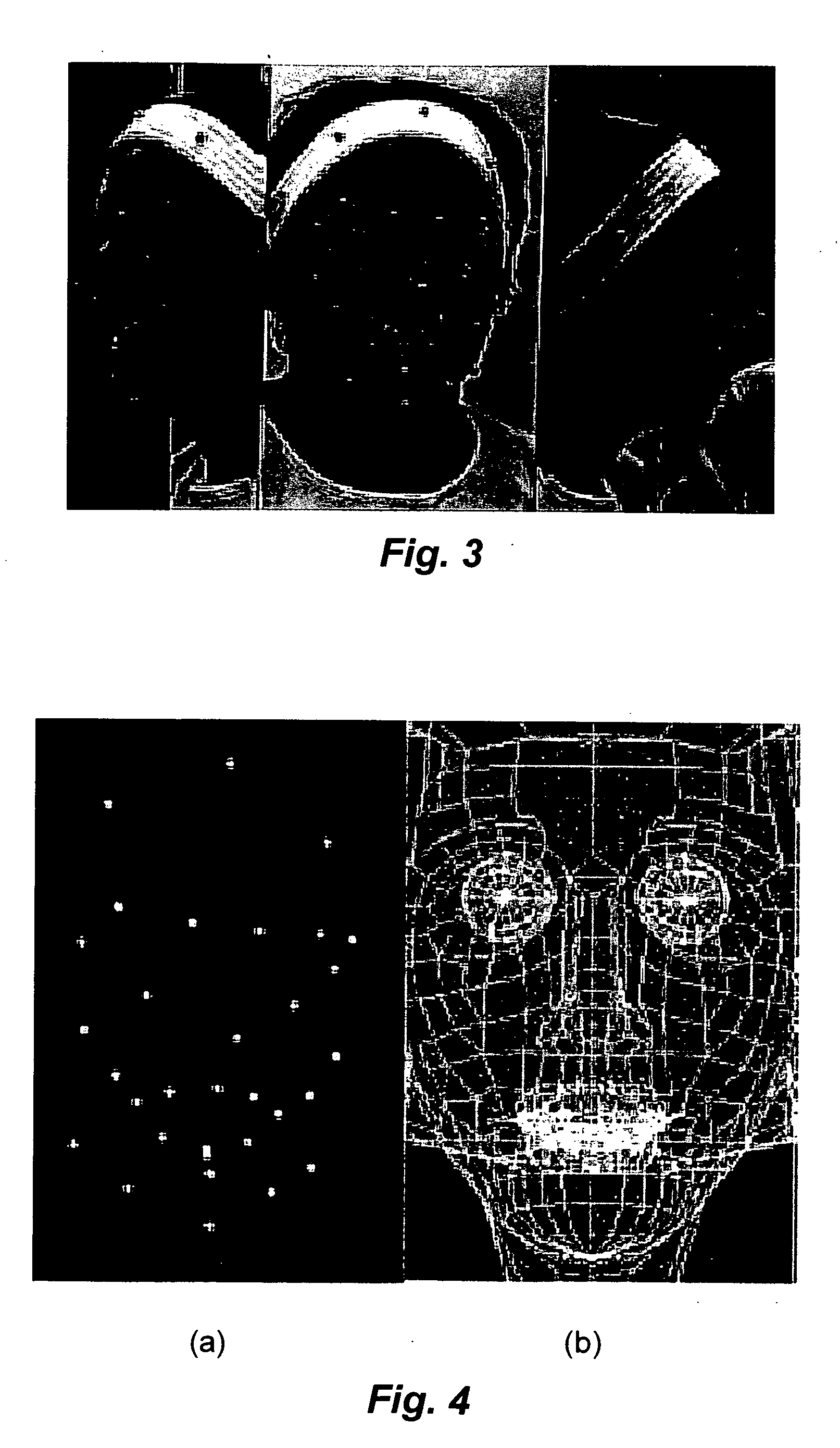Methods and systems for synthesis of accurate visible speech via transformation of motion capture data
a technology of motion capture data and synthesis method, applied in the field of visible speech synthesis, can solve the problems of difficult control of 3d lip motion, low level of sign language understanding, and low level of accurate visible speech and facial expressions for 3d computer characters, so as to achieve smooth transition
- Summary
- Abstract
- Description
- Claims
- Application Information
AI Technical Summary
Benefits of technology
Problems solved by technology
Method used
Image
Examples
Embodiment Construction
1. Overview
[0031] Animating accurate visible speech is useful in face animation because of its many practical applications, ranging from language training for the hearing impaired, to films and game productions, animated agents for human computer interaction, virtual avatars, model-based image coding in MPEG4, and electronic commerce, among a variety of other applications. Embodiments of the invention make use of motion-capture technologies to synthesize accurate visible speech. Facial movements are recorded from real actors and mapped to three-dimensional face models by executing tasks that include motion capture, motion mapping, and motion concatenation.
[0032] In motion capture, a set of three-dimensional markers is glued onto a human face. The subject then produces a set of words that cover important lip-transition motions from one viseme to another. In one embodiment discussed in detail below, sixteen visemes are used, but the invention is not limited to any particular number...
PUM
 Login to View More
Login to View More Abstract
Description
Claims
Application Information
 Login to View More
Login to View More - R&D
- Intellectual Property
- Life Sciences
- Materials
- Tech Scout
- Unparalleled Data Quality
- Higher Quality Content
- 60% Fewer Hallucinations
Browse by: Latest US Patents, China's latest patents, Technical Efficacy Thesaurus, Application Domain, Technology Topic, Popular Technical Reports.
© 2025 PatSnap. All rights reserved.Legal|Privacy policy|Modern Slavery Act Transparency Statement|Sitemap|About US| Contact US: help@patsnap.com



